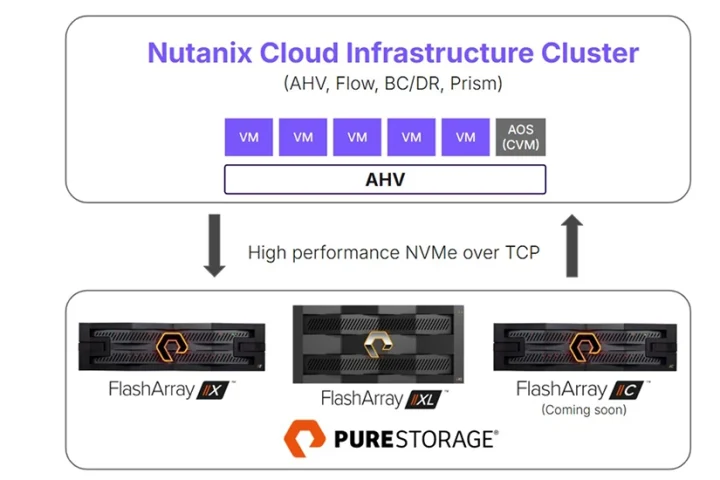The Middle East and Africa region has mostly been a follower in the launch of new technologies than a leader. But with 5G, it will be different. Telecom service providers in the region are all set to deliver 5G services.
The Middle East is fast becoming one of the industry’s most dynamic markets, looking to be at the forefront of telecommunication innovation. According to ResearchandMarkets.com, mobile user penetration in Africa and Middle East reached 59% in 2018 and will grow to 70% by the end of 2023, aided by mobile coverage expansion. M2M/IoT will be the fastest growing device segment in AME. This is driven by initiatives in transportation, smart cities, and security solutions, thereby generating service opportunities for telcos and IT vendors. Ongoing trials and developments of 5G networks, primarily in MENA, and expansions of 4G networks throughout AME will create new opportunities for equipment vendors and investors.
[quote font=”tahoma” font_size=”13″ font_style=”italic” color=”#262626″ bgcolor=”#f9f9f9″ bcolor=”#004d77″]
While CommScope is helping to shape communication connectivity and networks of the future, our fundamental viewpoint is that 5G will be a “network of networks”
Femi Oshiga,
Vice President of Service Providers,
Middle East & Africa,
CommScope
[/quote]
Investments in MENA
The launch of 5G services by telecom providers like Etisalat, Ooredoo, STC and Zain will assist 5G to boom in the GCC region in the coming years.
Oman, Turkey and Jordan, the other main telecom markets in the Middle East are expected to deploy 5G in 2020 and 2021, according to a GSMA report indicated in 2018. 5G will account for 6% of total connections in the Middle East and North Africa region and 16% of total connections in GCC Arab States by 2025. Migration to 5G is expected to proceed at a much slower pace than that of 4G, since subscribers are less likely to migrate to expensive 5G service.
In May, – Etisalat became the first service provider in the region to unveil the availability of 5G network, supporting smartphones for commercial use. It was soon followed by UAE’s second operator du and Bahraini telco Batelco. Etisalat is also investing more than AED 4 billion in rolling out 5G network base stations this year.
[quote font=”tahoma” font_size=”13″ font_style=”italic” color=”#262626″ bgcolor=”#f9f9f9″ bcolor=”#004d77″]
“Only vendors with new generation systems with future-proof architecture and a clear vision, for how to generate revenue growth for telcos, will be considered in all future tenders,”
Hassen Hamza,
Presales and Business Development Manager,
Nexign
[/quote]
With the technology expected to contribute billions to economies around the region, network operators are rolling out pilot deployments and making investments in communications infrastructure.
Femi Oshiga, Vice President of Service Providers, Middle East & Africa, CommScope said – “For some, testing will happen this year while for others, 5G is on the horizon. To prepare for a network which is 100 times faster than 4G, our customers are investing in innovation which increases capacity and offers spectral efficiency. Winning the race to 5G will entail significant investment – both for deploying 5G network infrastructure and for supporting continued 5G R&D and innovation. Proactive government policies can help advance these efforts and accelerate ubiquitous 5G deployment. Allocating additional federal government funding for 5G, for example, will support and complement private sector initiatives. While CommScope is helping to shape communication connectivity and networks of the future, our fundamental viewpoint is that 5G will be a “network of networks” — including wireline and wireless, licensed and unlicensed – with deep fiber penetration in both to support the variety of 5G use cases.“
[quote font=”tahoma” font_size=”13″ font_style=”italic” color=”#262626″ bgcolor=”#f9f9f9″ bcolor=”#004d77″]
“At InfiNet, we are responding to these market trends by building a brand-new portfolio of products and technologies, like Quanta 5, that will enable WISPs to thrive in the 5G era,”
Andrey Koynov,
CTO,
InfiNet Wireless
[/quote]
Hassen Hamza, Presales and Business Development Manager, Nexign commented – “Massive investments in 5G infrastructure can cause gaps in the revenue structure for telcos. This is why during the early phase of adoption, telcos can partner with 5G infrastructure vendors and create joint pilot projects on a revenue share model. 5G radio and infrastructure vendors are competing with each other to bring more value for telcos, making joint pilot projects with these telcos an attractive option for them as well. It is important to note that governments will play a central role in 5G adoption too. They can significantly reduce investments from telcos by creating a joint 5G infrastructure operator, for example, and reduce payments for extended licensed spectrum.”
[quote font=”tahoma” font_size=”13″ font_style=”italic” color=”#262626″ bgcolor=”#f9f9f9″ bcolor=”#004d77″]
“Airbus has 30 years’ experience of serving Public Safety and the whole critical communications community with reliable high availability solutions seamlessly supporting users’ operational processes.”
Ali Helenius,
Head of Strategic Marketing and Technology,
Airbus
[/quote]
For all industry vendors―including infrastructure, applications and BSS—5G adoption will be a serious opportunity to not only keep market share, but to grow it significantly. Only vendors with new generation systems with future-proof architecture and a clear vision, for how to generate revenue growth for telcos, will be considered in all future tenders. Vendors will need to provide systems that support telcos in convergent scenarios and different types of networks—not only 3GPP―in order to give subscribers access to services outside of 5G coverage areas.
Tackling the Challenges
5G will trigger a transformation in the market with connections speeds expected to reach 100Mbps and latency expected to drop to 4ms. That being said, fixed 5G does pose several challenges, specifically around the range of coverage says Andrey Koynov, CTO at InfiNet Wireless As a consequence, WISPs are going to have to redesign their backhaul network and make a significant investment in infrastructure. At InfiNet, we are responding to these market trends by building a brand-new portfolio of products and technologies, like Quanta 5, that will enable WISPs to thrive in the 5G era.
“Quanta 5 has been designed as an all-in-one package to enable operators of all sizes to quickly deliver high-capacity premium services to their corporate clients, to interconnect their network nodes wherever they are located, or simply to provide internet connectivity to end users. The solution can also be deployed as part of a wide area network to connect remote locations to the main control and operations centres, whether for oil & gas companies as a part of their smart oilfield strategy, or for financial institutions wishing to seamlessly connect all their branches and offer better a customer experience,” added Andrey.
According to a research by Ericsson, 5G will reach 40% population coverage and 1.5 billion subscriptions worldwide by 2024, making it the fastest mobile generation ever to be rolled out on a global scale. However, with many other challenges, comes the risk of cyber attacks as well.
According to Airbus, societies are globally facing security threats. Terrorism, organized crime and cybercrime are probably the most serious and wide-spread of these threats. Public Safety organizations are under constant pressure to evolve and develop their operations in order to keep societies safe and well-functioning.
Ali Helenius, Head of Strategic Marketing and Technology at Airbussays – “Airbus has 30 years’ experience of serving Public Safety and the whole critical communications community with reliable high availability solutions seamlessly supporting users’ operational processes. Airbus is committed to on-going business model and technology evolution as evidenced by strong involvement in 3GPP standardization work which is needed to enable 4G/5G based interoperable high quality critical communications solutions.”
5G Future has Just Begun
The 5G future has just begun in the region. With the technology expected to contribute billions od economies, network operators are rolling out deployments, solutions and making investments. All we can say is – 5G has arrived and it could radically alter the digital and economic landscape in the region.
By : Divsha Bhat



















